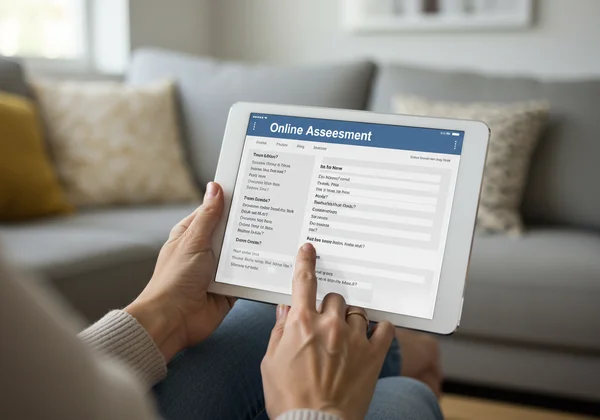BPD Relationships: A Partner's Guide & Test Your Understanding
Navigating a relationship with someone who has Borderline Personality Disorder (BPD) can feel like a journey through intense emotions, unpredictable challenges, and profound moments of connection. You may find yourself confused by rapid shifts in mood or struggling to understand behaviors that seem contradictory. How can you support a partner with BPD while protecting your own well-being? This guide is here to offer you clarity, compassion, and practical strategies. By understanding the core dynamics of BPD, you can learn to communicate more effectively, set healthy boundaries, and foster a more stable connection. A great first step in this journey is gaining a foundational understanding of the symptoms, which is where a preliminary BPD test can provide valuable insight. If you or your partner are seeking clarity, you can start your test now.
Understanding BPD in Romantic Relationships
BPD is characterized by deep patterns of instability in emotions, self-image, and relationships, which can be a confusing landscape for a partner. Gaining knowledge is the first step toward empathy and effective support. For those uncertain about the signs, a preliminary BPD test can offer a valuable starting point for self-reflection and discussion with a professional.

Decoding Common BPD Relationship Patterns
One of the most defining borderline personality disorder relationship patterns is the cycle between idealization and devaluation. In the beginning, your partner may see you as perfect, showering you with intense affection and admiration. This can feel incredibly validating and create a powerful bond. However, this perception can shift abruptly. A minor conflict or perceived slight can trigger a switch to devaluation, where your partner may become critical, angry, or distant. This "push-pull" dynamic stems from an intense fear of abandonment, a core symptom of BPD.
Recognizing Triggers & Intense Emotional Swings
A person with BPD experiences emotions with extraordinary intensity, a trait known as emotional dysregulation. Their emotional baseline is more sensitive, meaning that situations others might find mildly annoying can feel catastrophic. The primary trigger is often the fear of abandonment—real or imagined. This could be sparked by a delayed text message, a change in plans, or a tone of voice that is misinterpreted as rejection. Understanding these triggers isn't about walking on eggshells; it's about recognizing the source of the emotional storm and learning not to get swept away by it.
Mastering Communication with a Partner with BPD
Effective communication is the cornerstone of any healthy relationship, but it becomes absolutely essential when BPD is involved. Traditional methods of discussion or argument can quickly escalate. The goal is to shift from reactive arguments to proactive, empathetic conversations that foster connection instead of conflict. This approach is key to providing BPD partner support.
De-escalating Conflict and Emotional Storms Safely
When your partner is in a state of high emotional distress, logical reasoning is often ineffective. The priority is to de-escalate conflict safely. This means staying calm yourself, even when faced with intense anger or accusations. Use a soft, non-threatening tone of voice and avoid defensive body language like crossing your arms. Instead of arguing facts, focus on the underlying emotion. Simple statements like, "I can see you're really hurting right now," can be far more powerful than trying to prove a point. If the situation becomes too heated, it is okay to state calmly that you need to take a break and will return to the conversation later.

Validating Feelings While Maintaining Your Own Ground
Emotional validation is one of the most powerful tools in your communication toolkit. Validation does not mean you agree with your partner's perception of reality or their behavior. It simply means you acknowledge that their feelings are real for them in that moment. You can say, "It makes sense that you would feel abandoned when I had to work late, given how much you value our time together." This statement validates their emotion without agreeing that you abandoned them. It is crucial to pair validation with maintaining your own perspective and boundaries, creating a space where both sets of feelings can coexist. If you want to understand the symptoms that lead to these feelings, a screening can be a helpful starting point.
Setting Healthy Boundaries for a Sustainable BPD Relationship
Boundaries are not walls to keep your partner out; they are guidelines that protect the relationship and the well-being of both individuals. For the partner of someone with BPD, clear and consistent boundaries are non-negotiable for long-term sustainability and mental health. They create predictability in an often unpredictable environment.
Why Clear Boundaries Are Non-Negotiable
Without boundaries, you risk becoming enmeshed in a cycle of crisis and rescue, leading to caregiver burnout. Healthy boundaries define acceptable behavior and protect your emotional, mental, and even physical space. They teach your partner how to treat you and demonstrate that your needs matter, too. For the person with BPD, consistent boundaries, while difficult at first, can ultimately provide a sense of safety and predictability that helps reduce anxiety.

Practical Steps to Establish & Enforce Boundaries Respectfully
Establishing boundaries requires clear, calm, and consistent action. Start by identifying your limits. Then, communicate them using "I" statements during a calm moment. For example, "I will not continue a conversation when I am being yelled at. If that happens, I will leave the room until we can both speak respectfully." The most critical part is enforcing the boundary every single time. This consistency is key. To better identify which behaviors cross your boundaries, it can be useful to get a quick assessment of BPD-related patterns.
Self-Care and Support for the Partner of Someone with BPD
You cannot pour from an empty cup. Supporting a partner with BPD is emotionally demanding, and prioritizing your own self-care is not selfish—it's essential. Neglecting your own needs will inevitably lead to resentment and burnout, which helps no one. Your well-being is the foundation upon which you can offer genuine support.
Recognizing and Preventing Caregiver Burnout
Caregiver burnout is a state of physical, emotional, and mental exhaustion. Signs include chronic fatigue, irritability, feeling hopeless, withdrawing from friends and hobbies, and developing your own anxiety or depression. Prevention is key. Schedule time for yourself every single day, even if it's just for 15 minutes. Protect your sleep, eat nourishing food, and engage in physical activity. Acknowledge your own feelings—including frustration, anger, and sadness—without judgment.

Finding Your Own Support System and Professional Guidance
You are not alone, and you cannot do this alone. It is vital to have your own support system. This can include trusted friends, family members, a support group for partners of people with BPD, or a personal therapist. A professional can provide you with a safe space to process your experiences and equip you with coping strategies. Remember, supporting your partner starts with supporting yourself. Educating yourself through resources like a free BPD screening can also be a form of self-care, as it empowers you with knowledge.
Moving Forward: Hope and Healing
While the path to a healthy relationship with a partner who has BPD demands patience and understanding, it's a journey filled with opportunities for growth and deeper connection. By embracing strategies of validation, de-escalation, and boundary-setting, you and your partner can build a more stable and supportive environment together. Remember, recovery is a powerful reality, and prioritizing your well-being is fundamental to this shared journey. You are not alone, and clarity is within reach. If you're ready to gain deeper insight into the patterns you're observing, Take the first step toward understanding today.
Frequently Asked Questions for Partners of Individuals with BPD
What are the 9 symptoms of BPD that specifically affect romantic relationships?
The nine official criteria for BPD deeply impact relationships. They include: 1) Frantic efforts to avoid real or imagined abandonment; 2) A pattern of unstable and intense relationships (cycling between idealization and devaluation); 3) Unstable self-image or sense of self; 4) Impulsive behavior in at least two areas that are potentially self-damaging (e.g., spending, substance abuse); 5) Recurrent suicidal behavior or self-harm; 6) Intense and highly reactive moods; 7) Chronic feelings of emptiness; 8) Inappropriate, intense anger; and 9) Transient, stress-related paranoid thoughts.
What often triggers BPD rage or intense mood swings in my partner?
The most common and powerful trigger is the fear of abandonment or rejection. This can be activated by seemingly minor events, such as a perceived change in your tone, not responding to a text quickly enough, or needing to spend time alone or with others. Criticism, feeling misunderstood, or feeling invalidated can also trigger intense emotional reactions, often referred to as BPD rage.
Can a relationship with someone with BPD truly be healthy and last long-term?
Yes, it is possible, but it requires significant commitment from both partners. The individual with BPD typically needs to be actively engaged in treatment, such as Dialectical Behavior Therapy (DBT), to learn emotional regulation and interpersonal skills. The partner must be committed to practicing self-care, setting firm boundaries, and learning effective communication strategies. With professional support and mutual effort, many couples navigate these challenges and build a lasting, loving relationship.
How can my partner get an accurate BPD assessment or official diagnosis?
An official diagnosis must be made by a qualified mental health professional, such as a psychiatrist, psychologist, or licensed therapist, after a comprehensive evaluation. This involves detailed interviews and may include standardized psychological tests. While an official diagnosis requires a professional, an online BPD test can serve as an initial screening tool to highlight potential areas of concern. You can encourage your partner to start a free screening to explore these traits in a private, non-judgmental way.
What's the difference between BPD and Bipolar Disorder in a relationship context?
This is a common point of confusion. The key difference lies in the duration and trigger of the mood shifts. In BPD, emotional shifts are rapid, often lasting hours, and are typically triggered by interpersonal events (e.g., an argument with you). In Bipolar Disorder, mood episodes (mania or depression) are more sustained, lasting for days, weeks, or even months, and are less tied to immediate external events. While both can cause relationship strain, the patterns and interventions are quite different.